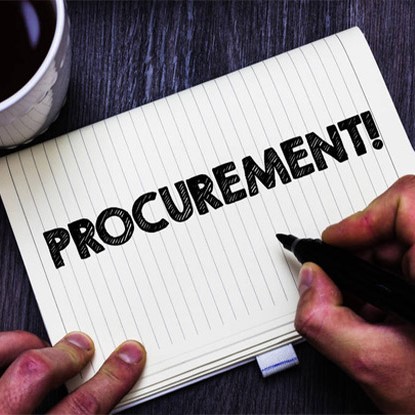Procure to Pay (P2P):
Process, Cycle and Definition


What is P2P? And which P2P exactly are we talking about? Discover how this essential business process streamlines procurement, optimizes expenses, and strengthens supplier relationships. This article provides a solid foundation for understanding the fundamentals of Procure to Pay (P2P) in the business world.
In the dynamic world of modern business, efficiency and precision in financial operations are paramount. One critical process that plays a pivotal role in achieving these goals is Procure to Pay, often abbreviated as P2P.
Procure to Pay is more than just a buzzword; it’s a comprehensive approach that encompasses various stages of procurement, invoicing, and payment. In this article, we will examine the concept of Procure to Pay, unravel its key components, explore its importance in contemporary business landscapes, and shed light on the reasons why every organization, regardless of its size or industry, should prioritize and optimize this crucial process.
In summary, P2P is a critical function for businesses of all sizes. By optimizing their P2P processes, businesses can save money, improve efficiency, and reduce risk.

Unlock the full potential of Procure to Pay with Artsyl cutting-edge OrderAction. Streamline procurement processes, from vendor selection to purchase order creation, and experience a new level of efficiency. Take charge of your procurement today!
The term «P2P» is often used to refer to both procure-to-pay (P2P) processes and peer-to-peer networking technology. It is important to distinguish between these two concepts to avoid confusion.
In the context of business, procure-to-pay (P2P) refers to the end-to-end process of acquiring goods and services from suppliers, from the initial request for quotation (RFQ) to the final payment of invoices. Procure-to-pay (P2P) encompasses all the activities involved in purchasing goods and services, including:
In the context of technology, peer-to-peer (P2P) refers to a network architecture in which computers communicate directly with each other, rather than through a central server. This allows for faster data transmission and more efficient resource sharing. P2P networks are commonly used for file sharing, streaming media, and decentralized applications (DApps).
The two concepts of P2P share some similarities in their names, but they are fundamentally different in their applications. Procure-to-pay is a business process that is essential for the smooth operation of any organization, while peer-to-peer technology is a type of network architecture that can be used for a variety of purposes.
To avoid confusion, it is important to use the term «P2P» only when referring to procure-to-pay processes and use the term «peer-to-peer (P2P)» only when referring to peer-to-peer networking technology. This will help to ensure that everyone is on the same page and that there is no misunderstanding between the two concepts.

The term «purchase to pay» is sometimes used interchangeably with «procure to pay» (P2P). However, there is a subtle distinction between the two.
«Purchase to pay» is a more narrow term that refers specifically to the final step in the P2P process, which is the payment of invoices. In other words, «purchase to pay» is the act of completing the payment process for goods and services that have been purchased.
«Procure to pay» is a broader term that encompasses the entire P2P process, from identifying and sourcing suppliers to the final payment of invoices. It includes all of the activities involved in purchasing goods and services, including requisitioning, approving, and receiving goods and services.
RELATED: Accelerating P2P With Process Automation
To sum things up, procure-to-pay (P2P) is a critical function for businesses of all sizes, and it is important to understand the difference between P2P and peer-to-peer (P2P) networking technology.
By avoiding confusion between these two concepts, businesses can ensure that they are using the most appropriate terminology and that they are leveraging the right tools and technologies to optimize their P2P processes.
Enhance Supplier Relationships
Build strong and lasting supplier relationships with ArtsylPay P2P focused platform. Improve communication, reduce discrepancies, and ensure timely payments. Elevate your supplier
collaboration to new heights.
Book a demo now
P2P is important for modern businesses for several reasons. First of all, P2P can help businesses save money by reducing the time and effort required to process invoices, negotiating better prices with suppliers, and avoiding late payments.
As a result, P2P can help businesses save money by automating tasks, such as invoice processing and payment reconciliation. It can also help businesses negotiate better prices with suppliers by providing them with real-time data on market prices.
Also, P2P can help businesses improve efficiency by automating tasks, streamlining workflows, and providing real-time visibility into the P2P process. In the same way, P2P can help businesses improve efficiency by automating tasks, such as purchase order creation and approval. It can also help businesses streamline workflows by providing a centralized platform for all P2P activities.
In addition, P2P can help businesses reduce risk by ensuring that goods and services are received on time and that invoices are paid accurately and on time. It can also help businesses comply with regulations by providing them with a centralized platform for all P2P activities.
In today’s competitive business environment, it is essential for businesses to have a strong P2P process in place. By optimizing their P2P processes, businesses can save money, improve efficiency, and reduce risk.
Say Goodbye to Manual Errors
Eliminate costly errors in your invoicing and payment processes. Artsyl InvoiceAction invoice automation technology ensures accurate invoice verification and payment execution, leaving no room for manual mistakes. It’s time to embrace precision.
Book a demo now
Procure-to-pay (P2P) is a critical function for businesses of all sizes, but it can also be a source of significant challenges. These challenges can range from inefficient workflows and inconsistent data to procurement fraud and compliance issues. Here is a list of common challenges in procure to pay (P2P):
Manual P2P processes are time-consuming and inefficient, which can lead to increased costs. In addition, manual processes are prone to errors, which can lead to incorrect payments and wasted resources. As a result, manual processes make it difficult to have real-time visibility into the P2P process, which can make it difficult to identify and address problems quickly.
RELATED: AI-Powered Invoice Data Extraction: Beyond OCR
Paper-based processes are slow and inflexible, which can hinder the efficiency of the P2P process. Another related obstacle is siloed processes. Disjointed systems can lead to delays and inefficiencies in the P2P process, while lack of standardization can make it difficult to automate the P2P process.
Inconsistent data can lead to errors in the P2P process, which can result in incorrect payments and wasted resources. Duplicate data can make it difficult to track and manage expenses. Resulting data silos can make it difficult to share information across different departments.
This is a related group of obstacles in P2P implementation. Lack of visibility into the P2P process can make it difficult to identify and address problems quickly. When it’s difficult to track the performance of the P2P process, there’s a limited ability to make informed decisions based on data.

Sometimes, conflicts of interest can arise when employees have personal or financial relationships with suppliers. Unauthorized purchases can be made by employees who are not following company policy, while forged invoices can be used to defraud a company.
Complying with complex regulations can be time-consuming and expensive. However, non-compliance with regulations can result in fines and penalties, especially when it’s difficult to track compliance with all applicable regulations.
Addressing these challenges requires a comprehensive approach that encompasses process improvement, technology adoption, and cultural change. Here’s how you can improve the P2P process in your company.
RELATED: Manual Invoice Processing vs Automated Invoice Processing
By understanding the common challenges in P2P, businesses can take steps to address them and improve the overall effectiveness of their procurement processes.
Cost Savings at Your Fingertips
Watch your costs plummet as ArtsylPay optimizes your P2P processes. From reducing administrative overhead to preventing overpayments, our technology is your key to significant cost savings.
Book a demo now
The procure-to-pay (P2P) process is a crucial aspect of business operations, encompassing the entire lifecycle of acquiring goods and services from suppliers, from sourcing and requisitioning to invoice processing and payment.
These real-world examples of how businesses effectively manage their P2P processes can offer valuable insights into streamlining, optimizing, and achieving greater efficiency. Here are some real-life examples of Procure to Pay (P2P) in action.
A tech giant like IBM relies on efficient procurement processes to manage its vast global supply chain. IBM implemented a comprehensive P2P system to streamline procurement, automate purchase orders, and enhance supplier collaboration. This resulted in cost savings, improved supplier relationships, and greater control over their procurement operations.
P&G, a consumer goods multinational, is known for its meticulous supply chain management. P&G uses P2P systems to optimize procurement, track inventory, and manage payments. Through P2P automation, they achieved greater accuracy in inventory forecasting and reduced excess inventory, saving billions of dollars.
The beverage giant Coca-Cola implemented a P2P system to centralize and standardize its procurement processes across its global operations. This allowed them to negotiate better terms with suppliers, improve spend visibility, and reduce manual errors in the procurement process.
RELATED: Accounts Payable: 101 Guide
Siemens, a global conglomerate, uses a P2P system to manage its procurement, invoicing, and payment processes. By automating these workflows, Siemens improved efficiency, reduced manual work, and gained better control over its expenses, ultimately leading to significant cost savings.
Unilever, a leading consumer goods company, utilizes a P2P system to streamline its procurement and payment processes. The system helps Unilever manage its vast network of suppliers and ensure compliance with procurement policies, resulting in better supplier relationships and cost-efficiency.
P2P systems aren’t just for large corporations. Many SMEs have also embraced P2P solutions to optimize their procurement and financial operations. These systems allow SMEs to automate their purchasing, invoice processing, and payment workflows, reducing administrative overhead and enhancing accuracy.
These real-life examples demonstrate the versatility and effectiveness of Procure to Pay processes across a range of industries and company sizes. Whether you’re a multinational corporation or a small business, implementing P2P practices can lead to cost savings, improved supplier relationships, and greater control over your financial operations.
Visibility into Your Financial Operations
Gain unparalleled visibility into your invoicing processes with Artsyl InvoiceAction P2P solution. Monitor expenses, track invoice approvals, and generate insightful reports effortlessly. Make informed decisions, backed by data.
Book a demo now
As we know, Procure to Pay (P2P) is the end-to-end process of acquiring goods and services from suppliers, from the initial request for quotation (RFQ) to the final payment of invoices. It is a critical function for businesses of all sizes, as it helps ensure that they have the necessary supplies to operate efficiently and that they are not overpaying for goods and services.
The procurement stage starts with sourcing, where businesses identify potential suppliers and evaluate their offerings. Vendor selection is a crucial step, involving criteria such as cost, quality, and reliability.
Once a need is identified, a purchase requisition is generated, outlining the required goods or services. This document initiates the procurement process and serves as an internal request for purchase.
Upon the arrival of ordered goods or services, a «goods receipt» is generated. This step confirms that the items have been received and are in good condition, aligning the physical delivery with the purchase order.
In some cases, especially for critical items, an inspection and quality control process may follow the goods receipt. This ensures that the received goods meet the specified quality standards.
RELATED: Advanced AI for Accounts Payable
After receiving goods or services, the supplier issues an invoice to the buyer. The invoice receipt stage involves capturing and recording this document, often digitally, to begin the payment process.
Once the invoice is received, it undergoes verification to ensure accuracy and compliance with the purchase order. This involves cross-referencing the invoice with the purchase order and goods receipt.
In this phase, the organization authorizes the payment based on the verified invoice. Payment authorization includes ensuring that all necessary approvals are in place and that the invoice is eligible for payment.
After receiving authorization, the final step is executing the payment to the supplier. This can be done through various payment methods, such as checks, electronic transfers, or online payment platforms, depending on the agreed-upon terms.
These stages encompass the end-to-end Procure to Pay (P2P) process, ensuring that businesses efficiently and accurately procure goods and services while maintaining control over expenses and quality.
Join the Future of P2P
The future of Procure to Pay is here, and it’s digital. Don’t get left behind. Embrace Artsyl OrderAction innovative intelligent order automation technology to stay ahead in the rapidly evolving business world. Your competitors are already on board—why wait?
Book a demo now
Procure-to-pay (P2P) best practices are guidelines that businesses can follow to improve the efficiency, effectiveness, and compliance of their P2P processes. These best practices can help businesses to save money, reduce risk, and improve overall business performance.
Some of the most important P2P best practices include:
By following these best practices, businesses can gain a competitive edge by improving their P2P processes.
Technology can play a critical role in improving the efficiency and effectiveness of P2P processes. Automation can be used to automate repetitive tasks, such as invoice processing and payment, which can save time and money.
Additionally, technology can be used to provide real-time visibility into the P2P process, which can help businesses to identify and address problems quickly.
Some of the most important P2P technologies include:
By investing in the right technology, businesses can significantly improve their P2P processes.
Your P2P Success Story Begins Now
Every successful business journey starts with a single step. Let that step be the adoption of ArtsylPay P2P solution. Experience the transformation—efficient procurement, accurate invoicing, and timely payments. Your success story begins now!
Book a demo now
Procure-to-pay (P2P) is a crucial process for any business that needs to purchase goods and services from suppliers. To optimize their P2P processes, businesses need to be aware of the common challenges that can arise, such as manual processes, inefficient workflows, and inconsistent data.
By addressing these challenges, businesses can improve their efficiency, reduce costs, and enhance compliance. With the right approach, businesses can transform their P2P processes into a strategic advantage that drives business growth and success.
Procure to Pay (P2P) is a business process that involves the entire cycle of acquiring goods or services, from the initial procurement or purchasing of items to the final payment to the vendor or supplier. It encompasses all the steps and activities necessary for an organization to obtain the products or services it needs in a systematic and efficient manner. The Procure to Pay process includes the following key stages:
RELATED: Invoice Approval Workflow: What Is It?
RELATED: What Is a Purchase Order: Complete Guide

Contact Us for an in-depth
product tour!
Efficient Procure to Pay processes contribute to cost savings, streamlined operations, and improved vendor relationships. Many organizations leverage technology, including Procure to Pay software, to automate and optimize these processes, enhancing accuracy, transparency, and overall efficiency.
P2P is crucial for businesses as it helps streamline procurement, improve cost control, enhance supplier relationships, reduce errors, and ensure compliance with procurement policies.
The typical stages in the P2P process include procurement (sourcing, purchase requisition, and purchase order creation), receiving (goods receipt and inspection), invoicing (invoice receipt and verification), and payment (authorization and execution).
P2P automation can reduce manual work, improve accuracy, speed up processes, enhance visibility into expenses, and ultimately lead to cost savings.
Common challenges include resistance to change, lack of supplier cooperation, data inaccuracies, and issues related to compliance and auditing.
P2P is closely integrated with finance and accounting, as it directly impacts accounts payable, budget management, and financial reporting.
Technology, including P2P software solutions, plays a significant role in automating and optimizing P2P processes, reducing manual work, and improving efficiency.

Yes, P2P principles can be adapted to businesses of all sizes, from small startups to large corporations, as it helps manage expenses, control costs, and improve procurement efficiency.
Organizations can ensure compliance through clear procurement policies, automated approval workflows, audit trails, and regular monitoring of P2P activities.
Emerging trends include the use of artificial intelligence (AI) for smarter procurement decisions, blockchain for enhanced transparency, and the integration of sustainability criteria in vendor selection.